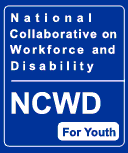A Positive Strategy for Expanding Market Share
What's the third largest market segment in the United States? The answer might surprise you. It's not a particular ethnicity, gender or age group. It's people with disabilities. The size of this population—54 million strong—surpasses Hispanics, African Americans and Asian Americans, as well as Generation X and teens. Add in their families, friends and associates, and you get a trillion dollars in purchasing power.
Want a slice? Any smart business owner would. As with any customer segment, one of the best ways to tap into the disability market is to ensure it's represented in your workforce. Employees with disabilities can help businesses understand and meet the needs of this important and expanding customer base. What's more, research shows that consumers both with and without disabilities favor businesses that employ people with disabilities.
Reflecting this, marketing is one of the key themes highlighted in the Business Case for Hiring People with Disabilities, an online, multi-media resource that illustrates how people with disabilities add value to America's businesses across six key concerns common to all employers, regardless of size or industry. In addition to marketing, the Business Case addresses return on investment, human capital, innovation, diversity and social responsibility.
"You have a mother of a child with a disability, and you have a company that is disability friendly, or has appropriate products. I guarantee you that will have an impact on where that mother purchases that product," says Joyce Bender, President and CEO of Bender Consulting Services, a company that matches employers' technology needs with qualified people with disabilities. "It does have an impact, because, when you're a person with a significant disability, there's a brother, there's a sister, there's a mother, there's a father, or a wife or a husband. There's a whole group, and they very well know how companies treat that person in their family."
Strategies for attracting both employees and customers with disabilities are often simple. Just ask patrons at the Positive Vibe Café in Richmond, Virginia. "Never had a bar where I could roll right up and have a blast," comments one satisfied customer who uses a wheelchair. The café's owner, Garth Larcen, notes that the accessible bar was the first thing his team decided to have, because the restaurant is one where everyone is welcome. But it's also one where anyone can train and work. "The kitchen is specially designed for people with disabilities, as well," Larcen adds. As a result, the Positive Vibe Café offers not just great food and fun for area residents, but also valuable skills and experience.
The Business Case for Hiring People with Disabilities, which includes Frequently Asked Questions on disability employment, is one of many resources available from the U.S. Department of Labor's Office of Disability Employment Policy (ODEP) to help America's businesses implement policies and programs that foster more inclusive workplaces.
Special Note: A new fact sheet was released on April 30 to help employers understand steps they can take to ensure the wellbeing of all employees, including those with disabilities, during a flu outbreak. To read the fact sheet, visit the What’s New page of ODEP’s Job Accommodation Network (JAN) Web site.
For additional news and resources, sign up for ODEP's email updates.
Office of Disability Employment Policy, U.S. Department of Labor
1-866-ODEP-DOL (633-7365) TTY: 1-877-889-5627 www.dol.gov/odep
If you no longer wish to receive this information, reply to this message
with 'REMOVE' in the subject line. Please note that you may request to
be removed at any time.
|














